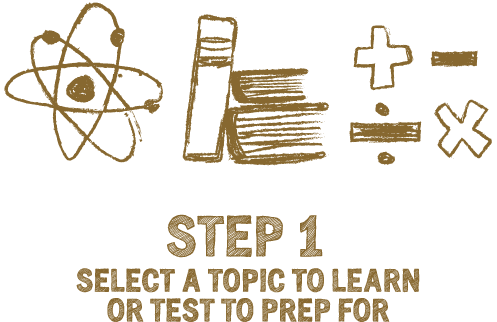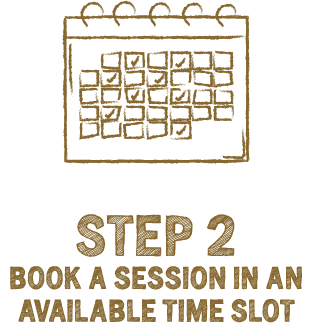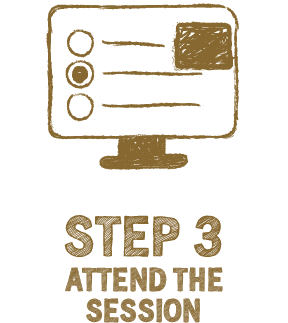
3rd Grade Online Tutoring
Third Grade Tutoring – tried and trusted way to supplement your child’s academic performance.
It is as intelligible as it is normal that not every parent has the skills it takes to teach 8-9 year olds. Work and household chores hardly leave you with any mental energy to give the attention your child needs and deserves. Third grade tutoring demands specific skills and techniques to make learning fun and engaging so that your child regards books as friends and not as enemies. Unlike previous grades, 3rd graders are expected to learn more through study than playful activities. However, it would be unfair to expect an 8-9 year old to be studious and obedient at all times.
Our elementary tutors, know exactly how to strike the balance between learning and fun. With years of teaching experience, our tutors for grade 3 understand the importance of building a rapport with your little one. Interactive lessons with fun worksheets followed-up by regular assessments make a full learning package for your 3rd grader.
Methodology based 3rd grade tutoring
After having served thousands of parents we can confidently say that your search for best ‘3rd grade tutor near me’ ends here! Our online learning solutions will help you glide through the crucial years of your child’s elementary schooling. Your child can then get the support she needs in the comfortable and encouraging environment of her home.
Our expert 3rd grade tutors are well experienced to adapt to every child’s unique learning needs; be it remedial support to improve your child’s grades or academic enrichment to prepare her for standardized tests like CogAT, SCAT or the SSAT. If you feel your child is struggling with a particular subject like math, our math tutor for 3rd grade can help your child overcome his math-phobia. On the other hand, our reading tutors for 3rd graders help your child develop love for reading. In fact, the reading techniques we employ while tutoring for reading comprehension 3rd grade proves to be helpful in all the subjects and not just English.
Let us take you through the brief list of topics under each subject that your child will learn at etutorworld-
Personalized Online Tutoring Plan for 3rd grade

PERSONALIZED ONLINE TUTORING

CAREFULLY DESIGNED SESSIONS PLAN & COURSES

SUBJECT & GRADE SPECIFIC EXPERTS

INDIVIDUALIZED WORKSHEETS/ HOMEWORK AFTER EVERY SESSION
3 Easy Steps to learn with an Online Live Expert Tutor





No credit card required. No obligation to purchase
Grade 3 Diagnostic Test
Here’s a brief summary of fundamental concepts included in our 3rd grade tutoring program.
| Standard | Common Core Area | Topic |
|---|---|---|
| Math.CC.3.G.A.1 | Geometry | Categorize quadrilaterals |
| Math.CC.3.G.A.2 | Cutting shapes into equal parts | |
| Identifying unit fractions | ||
| Math.CC.3.MD.A.1 | Measurement and Data | Telling time word problems with the number line |
| Telling time word problems | ||
| Math.CC.3.MD.A.2 | Arithmetic word problems with mass | |
| Arithmetic word problems with volume | ||
| Math.CC.3.MD.B.3 | Reading bar charts | |
| Solving problems with picture graphs | ||
| Creating picture and bar graphs | ||
| Creating bar charts | ||
| Reading pictographs | ||
| Reading bar charts | ||
| Reading pictographs | ||
| Solving problems with bar graphs | ||
| Math.CC.3.MD.B.4 | Marking data on line plots | |
| Math.CC.3.MD.C.5 | Find area by counting unit squares | |
| Understanding area | ||
| Find area by counting unit squares | ||
| Understanding area | ||
| Find area by counting unit squares | ||
| Understanding area | ||
| Math.CC.3.MD.C.6 | Measuring area with unit squares | |
| Find area by counting unit squares | ||
| Math.CC.3.MD.C.7 | Finding area by multiplying | |
| Decompose shapes to find area | ||
| Comparing areas by multiplying | ||
| Area and the distributive property | ||
| Finding area by multiplying | ||
| Decompose shapes to find area | ||
| Comparing areas by multiplying | ||
| Area and the distributive property | ||
| Finding area by multiplying | ||
| Decompose shapes to find area | ||
| Comparing areas by multiplying | ||
| Area and the distributive property | ||
| Finding area by multiplying | ||
| Decompose shapes to find area | ||
| Comparing areas by multiplying | ||
| Comparing areas by multiplying | ||
| Decompose shapes to find area | ||
| Area and the distributive property | ||
| Finding area by multiplying | ||
| Area and the distributive property | ||
| Math.CC.3.MD.D.8 | Comparing area and perimeter | |
| Perimeter | ||
| Math.CC.3.NBT.A.1 | Number and Operations in Base Ten | Rounding to the nearest 10 or 100 |
| Rounding challenge | ||
| Rounding to the nearest 10 or 100 on the number line | ||
| Math.CC.3.NBT.A.2 | Addition within 1000 | |
| Subtraction within 1000 | ||
| Addition using groups of 10 and 100 | ||
| Math.CC.3.NBT.A.3 | Multiply by tens word problems | |
| Multiply by tens | ||
| Math.CC.3.NF.A.1 | Number and Operations: Fractions | Identifying unit fractions |
| Recognizing fractions | ||
| Identifying numerators and denominators | ||
| Recognizing fractions | ||
| Cutting shapes into equal parts | ||
| Math.CC.3.NF.A.2 | Finding 1 on the number line | |
| Unit fractions on the number line | ||
| Fractions on the number line | ||
| Finding 1 on the number line | ||
| Unit fractions on the number line | ||
| Fractions on the number line | ||
| Finding 1 on the number line | ||
| Unit fractions on the number line | ||
| Fractions on the number line | ||
| Math.CC.3.NF.A.3 | Visually comparing fractions | |
| Comparing fractions with the same numerator | ||
| Comparing fractions with the same denominator | ||
| Equivalent fractions on the number line | ||
| Equivalent fraction models | ||
| Comparing fractions with the same numerator or denominator | ||
| Visually comparing fractions | ||
| Comparing fractions with the same numerator | ||
| Comparing fractions with the same denominator | ||
| Equivalent fractions on the number line | ||
| Equivalent fraction models | ||
| Comparing fractions with the same numerator or denominator/td> | ||
| Equivalent fractions on the number line | ||
| Equivalent fractions on the number line | ||
| Equivalent fractions on the number line | ||
| Comparing fractions with the same numerator or denominator | ||
| Comparing fractions with the same numerator | ||
| Comparing fractions with the same denominator | ||
| Comparing fractions with the same numerator or denominator | ||
| Equivalent fraction models | ||
| Equivalent fraction models | ||
| Comparing fractions with the same denominator | ||
| Visually comparing fractions | ||
| Visually comparing fractions | ||
| Equivalent fraction models | ||
| Comparing fractions with the same denominator | ||
| Visually comparing fractions | ||
| Comparing fractions with the same numerator | ||
| Comparing fractions with the same numerator or denominator | ||
| Comparing fractions with the same numerator | ||
| Math.CC.3.OA.A.1 | Operations and Algebraic Thinking | Meaning of multiplication |
| Multiplying with arrays | ||
| Math.CC.3.OA.A.2 | Meaning of division | |
| Dividing with visuals | ||
| Math.CC.3.OA.A.3 | Problems involving multiplication and division. | |
| Math.CC.3.OA.A.4 | Multiplying 1-digit numbers | |
| 1-digit division | ||
| Basic division | ||
| Math.CC.3.OA.B.5 | Associative property of multiplication | |
| Properties of multiplication | ||
| Commutative property of multiplication | ||
| Math.CC.3.OA.B.6 | Letters and symbols in multiplication and division equations | |
| Relate division to multiplication | ||
| Relate division to multiplication word problems | ||
| Math.CC.3.OA.C.7 | Dividing by 8 | |
| Multiplying by 4 | ||
| Dividing by 1 | ||
| Dividing by 6 | ||
| Dividing by 3 | ||
| Dividing by 4 | ||
| Dividing by 7 | ||
| Dividing by 5 | ||
| Multiplying by 6 | ||
| Multiplying by 2 | ||
| Multiplying by 8 | ||
| Multiplying by 7 | ||
| Dividing by 9 | ||
| Multiplying by 0 or 1 | ||
| Multiplying by 9 | ||
| Whole numbers on the number line | ||
| Dividing by 2 | ||
| Dividing by 10 | ||
| Multiplying by 3 | ||
| Multiplying by 5 | ||
| Math.CC.3.OA.D.8 | Two-step word problems with addition, subtraction, multiplication, and division | |
| Math.CC.3.OA.D.9 | Math patterns 1 | |
| Patterns in multiplication tables |
| SECTION | NGSS CODE | CORE IDEAS | TOPICS |
|---|---|---|---|
| PHYSICAL SCIENCES | 3-PS2 | Forces and Interactions | Force and Motion |
| Balanced and Unbalanced Forces | |||
| Speed and Velocity | |||
| Mass and Weight | |||
| Object-Object Interactions | Contact and Non-Contact Forces | ||
| Electric and Magnetic Forces | |||
| Gravity | |||
| LIFE SCIENCES | 3-PS2-4 | Interdependent Relationships in Ecosystems | Define a simple design problem that can be solved by applying scientific ideas about magnets. |
| 3-LS2-1 | Animal Communities | ||
| 3-LS4-1 | Evidence of Common Ancestry and Diversity | Benefits of Group Behavior in Survival | |
| Fossils | |||
| Adaptation | |||
| 3-LS4-C | What do fossils tell us? | ||
| Extinction | |||
| What is a Habitat? | |||
| Inheritance and Variation of Traits | |||
| 3-LS1 | What is meant by Adaptation? | ||
| How does an organism adapt to a changing habitat? | |||
| Inheritance and Variation of Traits | Diverse Life Cycles of Organisms | ||
| Inheritance of Traits in Plants and Animals | |||
| Earth’s Sciences | |||
| 3-ESS2-1 | Variation of Traits | ||
| Our Environment | |||
| Natural Selection | |||
| ESS2.D | Weather and Climate | Basic Components of Weather | |
| Weather in different Seasons | |||
| Weather Measuring Tools, Data and Graphs | |||
| Weather and Climate | |||
| How do Weather and Climate affect us? | |||
| Global Weather Patterns | |||
| Natural Hazards | |||
| Safety Precautions for Weather Emergencies | |||
| Engineering Design | Define a simple design problem reflecting a need or a want that includes specified criteria for success and constaints on materials, time and cost. | ||
| 3-5-ETS1-1 | |||
| Generate and compare multiple possible solutions to a problem based on how well each is likely to meet the criteria and constraits. | |||
| Engineering Design | Science behind a roller coaster |
| COMMON CORE SECTIONS – GRADE 3 | COMMON CORE CODE | COMMON CORE STANDARD (ANCHOR) |
|---|---|---|
| Conventions of Standard English: | CCSS.ELA-LITERACY.L.3.1 | Demonstrate command of the conventions of standard English grammar and usage when writing or speaking. |
| CCSS.ELA-LITERACY.L.3.1.A | Parts of speech-revision | |
| CCSS.ELA-LITERACY.L.3.1.B
CCSS.ELA-LITERACY.L.3.1.C |
Regular and irregular plural nouns; Abstract nouns | |
| CCSS.ELA-LITERACY.L.3.1.D
CCSS.ELA-LITERACY.L.3.1.E |
Regular and irregular verbs; Tenses of verbs | |
| CCSS.ELA-LITERACY.L.3.1.F | Subject-noun and pronoun-antecedent agreement | |
| CCSS.ELA-LITERACY.L.3.1.G
CCSS.ELA-LITERACY.L.3.1.H
|
Comparative and superlative adjectives and adverbs; Coordinating and subordinating conjunctions. | |
| CCSS.ELA-LITERACY.L.3.1.I | Simple, complex and compound sentences | |
| CCSS.ELA-LITERACY.L.3.2.A – CCSS.ELA-LITERACY.L.3.2.D |
Capitalization in titles; Commas in addresses; Commas and quotation marks in dialogues; apostrophe uses | |
| CCSS.ELA-LITERACY.L.3.2.E –
CCSS.ELA-LITERACY.L.3.2.G
|
Use spelling patterns and generalizations,word families, position-based spellings, syllable patterns, ending rules and suffixes in writing words.
-Use of dictionaries |
|
| Knowledge of Language: | CCSS.ELA-LITERACY.L.3.3 | Use knowledge of language and its conventions when writing, speaking, reading, or listening. |
| Vocabulary Acquisition and Use: | CCSS.ELA-LITERACY.L.3.4
CCSS.ELA-LITERACY.L.3.5 CCSS.ELA-LITERACY.L.3.6
|
– Sentence level context to clue
– Affixes- Known and unknown root word – Literal and non literal meaning of words – Real life connections between words – Grade specific vocabulary |
| Reading: Literature Key Ideas and details |
CCSS.ELA-LITERACY.RL.3.1 CCSS.ELA-LITERACY.RL.3.2 CCSS.ELA-LITERACY.RL.3.3
|
– Understanding a text
– Moral/idea of a text – Characters and actions |
| Craft and Structure: | CCSS.ELA-LITERACY.RL.3.4
CCSS.ELA-LITERACY.RL.3.5 CCSS.ELA-LITERACY.RL.3.6 |
Context clues and figurative language;
Chapters, Scenes and stanza Point of view of the narrator |
| Integration of Knowledge and Ideas: | CCSS.ELA-LITERACY.RL.3.7
CCSS.ELA-LITERACY.RL.3.9 |
– Use of illustrations
– Compare and contrast themes and settings – Read and comprehend |
| Range of Reading and Level of Text Complexity | CCSS.ELA-LITERACY.RL.3.10 | -Grade appropriate reading skills |
| Reading: Informational Text
Key Ideas and Details: |
CCSS.ELA-LITERACY.RI.3.1
CCSS.ELA-LITERACY.RI.3.2 CCSS.ELA-LITERACY.RI.3.3 |
– Understanding of a text
– Expository/technical texts – Relatioship between series of events |
| Craft and Structure: | CCSS.ELA-LITERACY.RI.3.4
CCSS.ELA-LITERACY.RI.3.5 CCSS.ELA-LITERACY.RI.3.6 |
-Contextual clues
-Text features and speech tools -Point of view in a text |
| Integration of Knowledge and Ideas: | CCSS.ELA-LITERACY.RI.3.7
CCSS.ELA-LITERACY.RI.3.8 CCSS.ELA-LITERACY.RI.3.9 |
– Visual aids and displays
– Logical connection in sentences and paragraphs – Compare and contrast two texts on same topic |
| Range of Reading and Level of Text Complexity: | CCSS.ELA-LITERACY.RI.3.10 | Read and comprehend informational texts |
| Reading: Foundational Skills
Phonics and Word Recognition: |
CCSS.ELA-LITERACY.RF.3.3A-D | – Spelling and syllable patterns
– Suffixes and prefixes – Latin suffixes – Multisyllabic words – Sight words |
| Fluency: | CCSS.ELA-LITERACY.RF.3.4A-C | – Read and explain fluently
– Reading Poerty and Prose fluentlly |
| Writing
Text Types and Purposes: |
CCSS.ELA-LITERACY.W.3.1A-D
CCSS.ELA-LITERACY.W.3.2A-D CCSS.ELA-LITERACY.W.3.3A-D |
– Writing Opinion pieces
– Writing informative texts – Writing narrative texts – Write and publish |
| Production and Distribution of Writing: | CCSS.ELA-LITERACY.W.3.4
CCSS.ELA-LITERACY.W.3.5 CCSS.ELA-LITERACY.W.3.6 |
Write and Publish |
| Research to Build and Present Knowledge: | CCSS.ELA-LITERACY.W.3.7
CCSS.ELA-LITERACY.W.3.8 |
– Conduct research project
– Collect information |
| Range of Writing: | CCSS.ELA-LITERACY.W.3.10 | To write |
| Speaking and Listening | CCSS.ELA-LITERACY.SL.3.1 A-D
CCSS.ELA-LITERACY.SL.3.2 CCSS.ELA-LITERACY.SL.3.3 |
-Collaboration
– Rules of discussion – Listen, express and link ideas – Identification of main idea and key details – Ask and answer questions |
| Presentation of Knowledge and Ideas: | CCSS.ELA-LITERACY.SL.3.4
CCSS.ELA-LITERACY.SL.3.5 CCSS.ELA-LITERACY.SL.3.6 |
-Clarity in speech
-Read stories and poems -Speak clearly |
Online Tutoring Pricing
Expert 1-on-1 Personal Tutoring, Now Affordable to All.
Every online tutoring session has 50 to 55 minutes of teaching time.
1 Session
- 1 Month Validity
5 Sessions
- 1 Month Validity
10 Sessions
(Most Popular)- 3 Months Validity
50 Sessions
- 6 Months Validity
100 Sessions
- 12 Months Validity
Test Prep Help
If you think that your child is gifted and needs to advance a grade or two then look no further than eTutorWorld! We will assess her talents and nudge her gently towards her goal. The student will work with a qualified teacher to ace the test without feeling stressed. 3rd grade tutoring online at eTutorWorld can prepare students for the following tests by improving their test taking skills as required.
WHAT OUR CUSTOMERS HAVE TO SAY
It was my first experience with an online tutor for my child. During this pandemic it was basically the only way to go. I made the best choice when I choose etutorworld. The tutor was awesome and patient with her and he provided her with ways to study. I will recommend etutorworld to anyone that is seeking to adhere to social distancing and even for future studies. GREAT JOB!!
Aleksey Gaziev
Very good structure and flow of the sessions, materials used are also good - overall very positive experience.
Veronica S Lennon
Excellent quality and service from both an academic and as admin point of view!
Shaivi Shah
Kind, well qualified and very responsible teacher. Would like to try other subjects and want to have my second child tutored. Great value, too.
Leah Dixon
Frequenty Asked Questions (FAQs)
1. How can I get help for my child with specific concepts only?
Our tutoring sessions give you full control over your child’s study topics. With the help of our academic counselors, you can design an individualized tutoring program for your child. Schedule a free session to meet a LIVE tutor.
Call us for more details on +1-269-763-4602 or +1-269-763-5024, we’ll help you customize a program for your kid.
2. Does 3rd grade tutoring include standardized test prep?
Yes, once the child understands basic concepts, it definitely builds a strong knowledge base required for taking standardized tests like CogAT (Level 9), SCAT Elementary, SSAT Grade 3. Plus, our diagnostic tests will help you find out your child’s current academic level. Based on the results, you can opt for the appropriate test prep programs for your child.
3. Are 3rd graders old enough to take online tutoring classes?
4. How can I track my child’s performance?
5. How can I get my child to read more?
6. What if my child is not happy with tutoring session?
At eTutorWorld, our tutors are with you at every step of the way. You can contact us to discuss the issues that your child is facing and we’ll make sure to resolve them. Nevertheless, if not satisfied with the results, your investment in our tutoring sessions is backed by a 30 day no-questions-asked refund policy.





